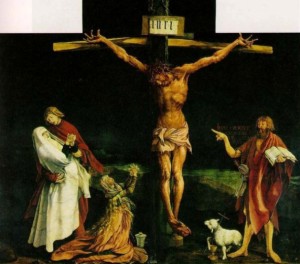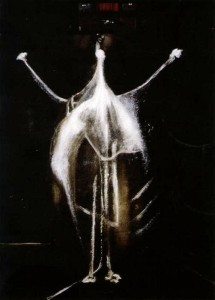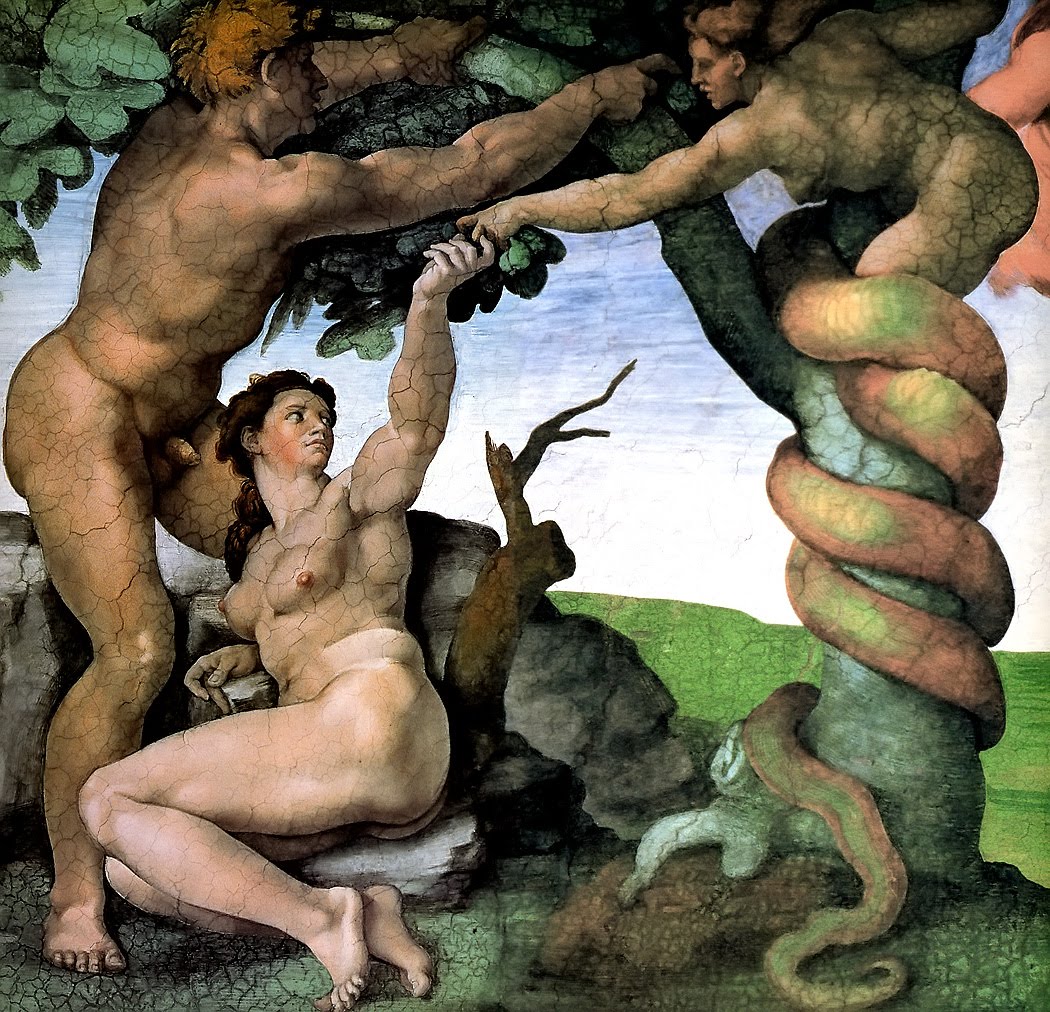To conclude a series on nonviolent interpretation of the bible we turn necessarily to the man from Galilee.
Jesus as cultural figure is so commonplace (both as doctrine and meaning), it is very difficult for us to get behind him, to identify a sense of his extrordinary novelty and singularity. Further below is a small thought experiment to try recapture this.
Jesus made a pivotal intervention in human history, explicitly teaching nonviolence (“turn the other cheek”), but even more crucially, displaying it in extreme, primordial circumstances.
The gospels set out the singularity of Jesus in terms of his identity as the Christ and of his relationship to the Father. The latter issue preoccupied the first centuries of Christianity and they understood the Christ/Messiah very much in the light of Jesus’ divinity.
But the relationship was conceived in Greek ontological terms, of being (“one being with the Father”), rather than the quality of the relationship, its phenomenology, as transformation of the nature of relationship itself.
Hence, the experiential basis of Jesus’ uniqueness was swallowed up in a doctrinal metaphysics of being, and we lost a human sense of why these immense claims were or could be made about him.
At Matt. 11: 25-27 we hear Jesus say, “Thank you Father that you have revealed these things to the simple, not the wise or intelligent.” The root meaning of nepios is those without speech or words (Latin infans), i.e. the pre-cultural child or unlettered adult. Jesus is saying clearly that his stuff is not revealed to those invested with conventional cultural knowledge, but to those ready to be humanized from the ground up. Those who are speechless in the old way, who are ready for a new human start.
He goes on directly to say no one “fully knows” or recognizes the Son except the Father, and no one recognizes the Father except the Son, and the one to whom the Son chooses to reveal him. In other words, it is not possible to know the Father/Mother within the established cultural order. It is only in the revolutionary relationship that Jesus establishes that it is possible to begin truly to know God. What could possibly explain this exceptionality about himself?
If it is not some arbitrary demand to confess “Jesus as Lord” it has to be the radical nonviolence of God which cannot be known without the radical nonviolence of Jesus.
Conversely, when Jesus asks at Matt. 16:13-17 “Who do men say that I am?” and Simon Peter answers that he is the Christ, Jesus comments that it is “not flesh and blood that has revealed this, but the Father.” Flesh and blood is the universal cultural system we are in, and to recognize the Christ/Messiah is to be moved by the Father/Mother. Thus the nonviolent God also works to make known in our hearts the Messianic nonviolence of Jesus and allow us to confess him as the Christ-of-nonviolence.
Scholars uncritically assume that what is currently in their heads, and the heads of half of humankind, was always there, but it wasn’t. The affirmation of a crucified teacher of nonviolence as the key to history could not have happened without a transcendent event. Let’s try this thought experiment.
Imagine MLK Jr., that his fight wasn’t with racism, or militarism, rather with the religion of his own people. They possessed a national territory which they had achieved by exodus from the rest of America after the end of slavery, let’s say somewhere like California. There was a central institution, a temple, which everyone attended at regular intervals, by obligation. The people believed God had led them to California and the temple was the place he had chosen for his worship. However, the territory was currently occupied and under the control of the Nazis who began in Germany but were now in power everywhere. To fight the Nazis was like taking on the world order itself. But the people could never quit resisting, because the presence of the Nazis in the land was a blasphemy to God. At the same time there was the belief that the presence of the Nazis was a judgment by God on the sins of the people. So there was the added sense among opinion leaders that they now had to be absolutely faithful to God’s rules, in order to end the terrible Nazi curse they were under.
MLK began to preach: he behaved as if none of this mattered, the land, the temple, the rules, the Nazis. All that was important was a totally new move by God that had to do with him and his preaching, with relationship to him. Through this relationship there was the possibility of love, nonviolence and forgiveness for everyone around you. This was God’s move in the world.
What would people say?
The matter did not end there. MLK clearly had enemies among the temple and rules people. But instead of hiding out in the desert and spreading his teaching untroubled by authorities, he headed to the temple and he shut it down, claiming full authority over this central symbol. All the people gathered round him, hanging on his every word. They expected something overwhelming: that this totally new outrageous teaching would get a sudden all-powerful confirmation from God, so that it would wipe out all opposition, including the Nazis. At this point the temple authorities understood a direct challenge has been made and they decided to take MLK out. For some inexplicable reason he did not protect himself or even hide sufficiently carefully, but allowed himself to be discovered and captured. His followers are disoriented and scattered, the crowd turns against him. The temple authorities hand him over to the Nazis who torture and humiliate him in the most horrendous and public way, making him a joke and a disgrace to the whole world. He is strung up in a public place and dies a slow, crushing death. He shows great courage and perseverance but he dies all the same. Next day is Sunday. He remains dead. The only possible conclusion: this man suffered from terminal religious delusion.
From where then will come the psychological resources to assert not only the teaching of this man, but that he does indeed represent the true meaning of God? The man who preached these things had entered a pit of unmediated horror and all that could be felt was the echoing brute triumph of violence. It beggars belief that unlettered disciples could invent the gospel out of violated, condemned hearts, and afterward continue peacefully in nonviolence and forgiveness.
To entertain this understanding in respect of Jesus is willful a-historicism, projecting on first century Galilean Jews the default sense of Christian truth embedded after two thousand years of slow-drip cultural presence. As one of our group said, Christian meaning is imprinted in people’s minds today as a kind of collective myth, and they assume it would always have been as easy to embrace the story culturally as it is now. They don’t recognize how profoundly they have been shaped, and how impossibly this easy acceptance could have occurred originally: absent the transcendent event of the Resurrection.
The Resurrection is the unnegotiable affirmation of theological nonviolence, and it could not have been imagined into existence! It is only when we understand the profound newness represented by Jesus and his death that we also recognize the organic truth of the resurrection. If the resurrection is understood simply as a confirmation that Jesus is divine then the suspicion will at once arise that it’s a religious fiction. In its proper context, of Jesus’ revelation of theological nonviolence, it becomes unavoidable.
Finally, a key aspect of the gospel narrative is Jesus’ mental suffering in the garden of Gethsemane. Matt. 26: 36-46 shows his horror facing the cross. The fact that the Father/Mother wills it does not demonstrate a perverse will to punish, rather the converse: because the Father/Mother is given over entirely to the risk of creation and its violent self-affirmation, so in imitation Jesus must surrender to the generative violence of human culture, in order to transform it. Jesus removes himself three times from his disciples, separating himself from actual humanity to do something new. Mark’s exthambeomai is to be out of one’s mind, paralyzed with terror. Matthew uses the standard word for grief (unto death), but keeps Mark’s ademoneo, the strongest word in the NT for depression and stress, a loathing for existence. These are very powerful words and they represent the depth of Jesus’ alienation from life as he faces the truth of human culture and its bottomless foundation in violence. Jesus must enter this human hell in order to bring it to love from within. The narrative of Jesus’ internal agony is unique in ancient and classical literature: no other hero is shown to undergo such terrifying loss of self-meaning. But it is precisely this interiority or subjectivity in crisis that guarantees Jesus has entered the core of our violent existence in order to bring it to love.
It is the infinite gesture of self-giving in Gethsemane that is raised up in resurrection. Gethsemane is the phenomenological core of resurrection: the story of one is not credible without the story of the other.
To confess Jesus, therefore, is to confess the dramatic in-breaking in human history of theological nonviolence.




 By love we know G-d as compassion; and because of that we can say, at a second moment, compassion is truth. Or being crosses over into compassion.
By love we know G-d as compassion; and because of that we can say, at a second moment, compassion is truth. Or being crosses over into compassion.
![th[6]](http://hopeintime.com/wp-content/uploads/2015/12/th6.jpg)
![th[6] (2)](http://hopeintime.com/wp-content/uploads/2015/12/th6-2-300x187.jpg)
![atom-electrons[1]](http://hopeintime.com/wp-content/uploads/2015/12/atom-electrons1-300x200.jpg)
![th[8]](http://hopeintime.com/wp-content/uploads/2015/12/th8-300x187.jpg)
![th[4]](http://hopeintime.com/wp-content/uploads/2015/11/th4-300x180.jpg)



![MV5BMTc2MjQwMzI2NV5BMl5BanBnXkFtZTgwMTQzNjUxMjE@._V1._CR41,12,2916,1943_SY100_CR25,0,100,100_AL_[1]](http://hopeintime.com/wp-content/uploads/2015/01/MV5BMTc2MjQwMzI2NV5BMl5BanBnXkFtZTgwMTQzNjUxMjE@._V1._CR411229161943_SY100_CR250100100_AL_1.jpg)
![exodus_4-1[1]](http://hopeintime.com/wp-content/uploads/2015/01/exodus_4-11-300x123.jpg)
![vaQyQBzSIsTQDou-580x326-noPad[1]](http://hopeintime.com/wp-content/uploads/2014/12/vaQyQBzSIsTQDou-580x326-noPad1-300x168.jpg)



